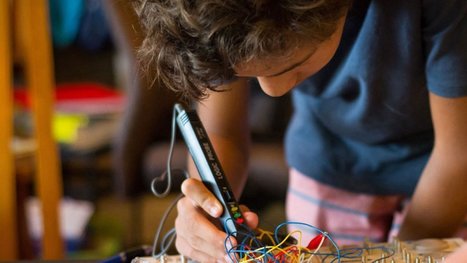Making is as old as learning itself. While the maker movement may only be about a decade old, the human desire to create dates back to the earliest forms of human activity, from making stone tools to drawing on cave walls (Halverson & Sheridan, 2014; Martinez & Stager, 2014). Thinkers such as Pestalozzi, Montessori, and Papert helped paved the way for the maker movement by stressing the importance of hands-on, student-centered, meaningful learning. Instead of viewing learning as the transmission of knowledge from teacher to student, these thinkers embraced the idea that children learn best when encouraged to discover, play, and experiment.
More recently, maker education is being used as a way to connect do-it-yourself informal learning to classrooms. Driven by new technologies such as 3D printing, robotics, and kid-friendly coding, making is emerging as an effective way to introduce students to STEM, particularly women and minorities. By incorporating elements of making into the classroom, educators can bridge the gap between what students are passionate about and what they're learning in school.
Research and publish the best content.
Get Started for FREE
Sign up with Facebook Sign up with X
I don't have a Facebook or a X account
Already have an account: Login
News, reviews, resources for AI, iTech, MakerEd, Coding and more ....
Curated by
John Evans
 Your new post is loading... Your new post is loading...
 Your new post is loading... Your new post is loading...
|










